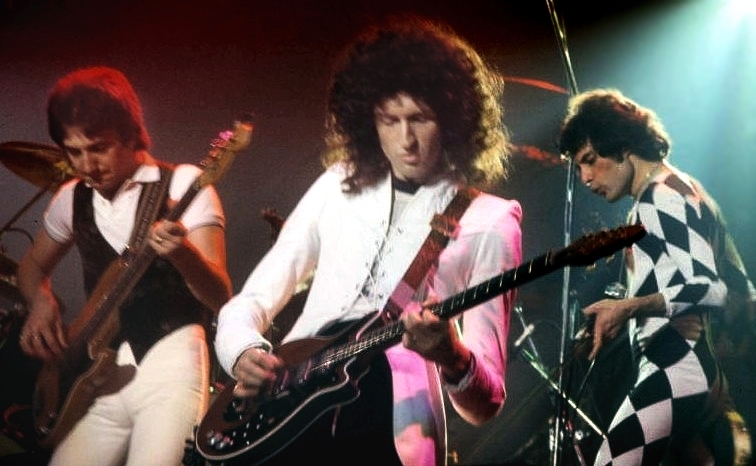
The story of Queen, one of rock music’s most enduring and influential bands, begins not with stadium-filling anthems or groundbreaking music videos, but in the vibrant, experimental cultural landscape of late 1960s West London. It was here that the initial sparks of what would become a global phenomenon were ignited, laying the groundwork for a sound and a stage presence that would captivate millions. This period was marked by evolving line-ups, a persistent quest for originality, and the gradual crystallization of a shared artistic vision that would define their unparalleled career.
Before the iconic quartet solidified, the individual talents of its future members were already making waves in various configurations, each contributing a unique element to the nascent musical identity that would eventually be known as Queen. This journey from obscurity to the brink of international recognition involved academic pursuits, chance encounters, and a steadfast belief in their collective musical prowess, setting the stage for the dramatic rise that was soon to follow. It is a testament to their dedication and creative synergy that, despite initial setbacks and a lack of immediate commercial success, they forged ahead, driven by an ambition that transcended the conventional boundaries of rock music.
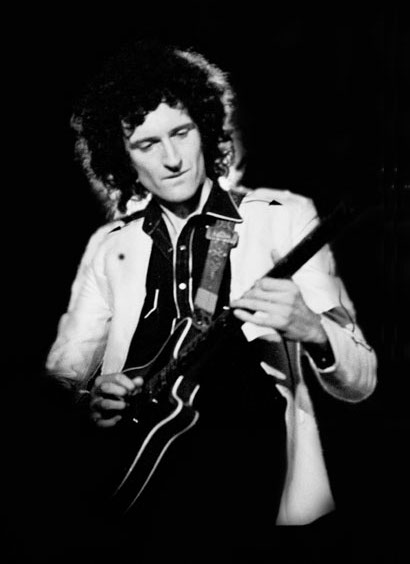
1. **The Genesis of Queen: From Smile to a New Identity (1968-1970)**: Guitarist Brian May, a physics and infrared astronomy student at Imperial College, was instrumental in the very earliest formations of the group. Having built his own guitar with his father in 1963, he first formed a band called 1984, named after Orwell’s novel, with singer Tim Staffell. Following his departure to focus on his degree and a desire to create original material, May formed Smile in early 1968 with Staffell, who now played bass, and keyboardist Chris Smith. To complete their line-up, May placed an advertisement on a college notice board seeking a “Mitch Mitchell/Ginger Baker type” drummer, which led to the audition and recruitment of Roger Taylor, then a young dental student.
While attending Ealing Art College, Tim Staffell became friends with another student, Farrokh “Freddie” Bulsara, a Zanzibari of Indian Parsi descent who had studied fashion design before switching to graphic art. Bulsara quickly became a keen admirer of Smile, frequently asking if he could join as their lead singer, a role May felt Staffell would not relinquish. Bulsara also ran a stall in Kensington Market alongside Roger Taylor, forging an early bond with his future bandmate. This period was crucial in nurturing the artistic connections that would eventually define one of music’s most legendary groups.
The pivotal moment arrived in 1970 when Tim Staffell decided to leave Smile, citing a clash between his interests in soul and R&B and the group’s hard rock sound, as well as a general frustration with their lack of success. Following Staffell’s departure, the remaining members readily accepted Bulsara as their new lead singer. They then recruited Taylor’s friend Mike Grose as bassist, and the quartet played their inaugural gig at a fundraising event in Truro on June 27, 1970. It was Bulsara who proposed renaming the group to “Queen,” a suggestion met with initial uncertainty but ultimately embraced after his declaration, “it’s wonderful, dear, people will love it.” Concurrently, inspired by a line in the song “My Fairy King,” he decided to change his surname to Mercury, completing the transformation into the iconic frontman we know today.
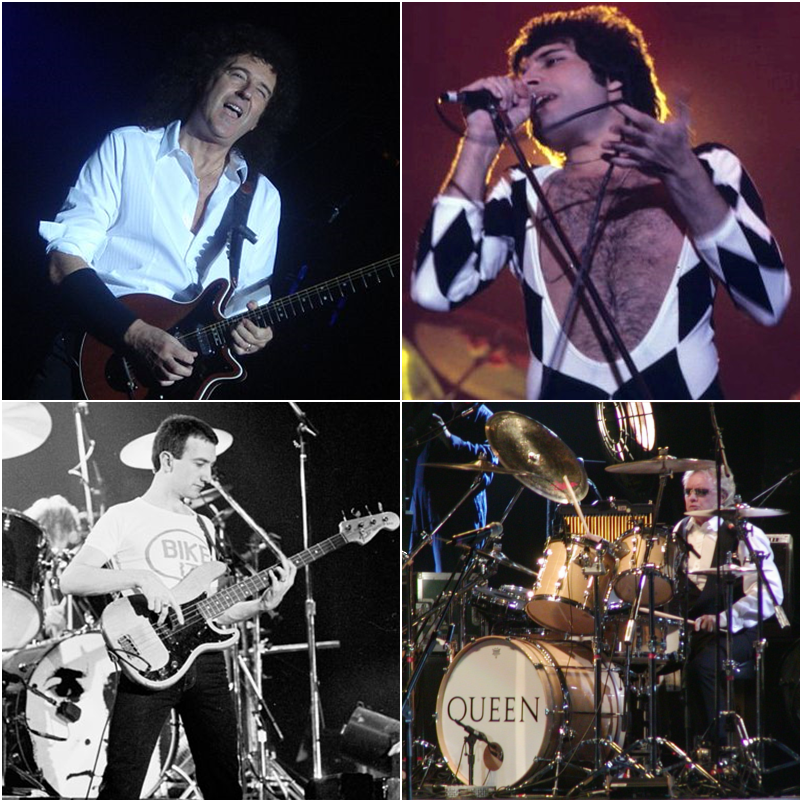
2. **The Classic Line-up and Early Demos (1971)**: The early days of Queen were marked by a series of personnel changes in the bassist role, underscoring the band’s ongoing search for the perfect combination. After Mike Grose played three live gigs, he decided not to continue with the band. He was subsequently replaced by Barry Mitchell, formerly of Crushed Butler, who performed thirteen gigs with Queen between August 1970 and January 1971. Following Mitchell’s departure, Doug Bogie briefly stepped in for two live appearances. This period of instability finally concluded in February 1971 with the arrival of John Deacon, an experienced bassist whose quiet demeanour complemented the band’s dynamic personalities, and whose skills in electronics would prove invaluable.
With the classic line-up of Mercury, May, Taylor, and Deacon now firmly established, the band played their first show together on July 2, 1971, at a Surrey college outside London. This solidified the core quartet that would define Queen’s sound and image for decades. Seeking opportunities to refine their material, Brian May contacted Terry Yeadon, an engineer at Pye Studios where Smile had previously recorded. Yeadon, who had since moved to De Lane Lea Studios’ new premises in Wembley, had a pressing need for a band to test out their new equipment and recording rooms. After attempts to reach The Kinks proved unsuccessful, he offered Queen the chance to record some demos in exchange for serving as acoustic test subjects for the studio.
This fortuitous arrangement allowed Queen to record five of their original songs, which included future staples like “Liar,” “Keep Yourself Alive,” “Great King Rat,” “The Night Comes Down,” and “Jesus.” During these crucial recording sessions, producers John Anthony and Roy Thomas Baker visited the band. They were particularly impressed with “Keep Yourself Alive,” recognising its potential, and subsequently began actively promoting the band to various record companies, setting the stage for Queen’s professional recording career.
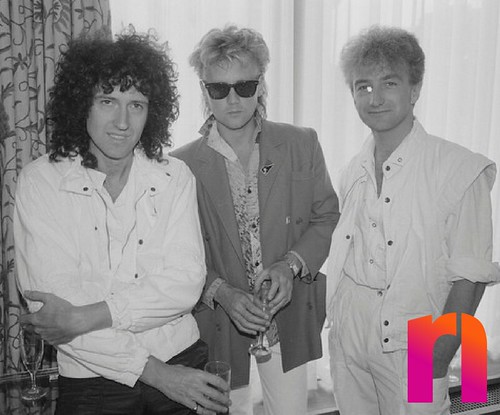
3. **Securing a Deal and Debut Album ‘Queen’ (1972-1973)**: Promoter Ken Testi’s efforts led to an offer from Charisma Records, which included an advance of approximately £25,000. However, Queen chose to decline this offer, perceiving that the label would prioritize Genesis. Testi then entered into discussions with Norman Sheffield of Trident Studios, which resulted in a management deal under Neptune Productions, a subsidiary of Trident. This arrangement was mutually beneficial: Trident was expanding into management, and Queen gained access to the hi-tech recording facilities utilized by signed musicians. Roger Taylor later characterized these early off-peak studio hours as “gold dust,” highlighting the invaluable opportunity they presented for the band’s development.
Queen began 1972 with a sparsely attended gig at Bedford College, London, where only six people turned up, a stark reminder of their struggle for recognition. Following a few more shows, they ceased live performances for eight months to concentrate on recording their debut album with producers John Anthony and Roy Thomas Baker. During sessions at Trident, witnessing David Bowie with the Spiders from Mars live underscored the urgent need for their album to make a significant impact. The recording process, however, was not without its challenges; Anthony and Baker initially clashed with the band, particularly Brian May, regarding the album’s direction, exposing the band’s inexperience in the studio. This tension, centered around integrating technical perfection with live performance realities, led to what Baker described as “kitchen sink overproduction.”
The resulting debut album, titled ‘Queen’, presented a compelling mix of heavy metal and progressive rock. The band was notably dissatisfied with the re-recording of “The Night Comes Down,” opting instead to use the earlier De Lane Lea demo for the finished album. Another track, “Mad the Swine,” was removed from the final running order after the band and Baker could not agree on a mix. Mike Stone, who later worked on several other Queen albums, was responsible for the final mix of “Keep Yourself Alive.” Despite completing the album by January 1972, the band had yet to secure a record contract. To attract record company interest, Trident arranged showcase gigs at The Pheasantry on November 6 and at the Marquee Club on December 20.
Queen continued to promote their unreleased album in February 1973 on BBC Radio 1, still without a record label. The following month, Trident successfully brokered a deal with EMI Records. The single “Keep Yourself Alive” was released on July 6, with the album ‘Queen’ appearing a week later. The front cover featured a live shot of Freddie Mercury taken by Roger Taylor’s friend Douglass Puddifoot, while John Deacon was credited as “Deacon John” and Taylor used his full name, Roger Meddows-Taylor. The album was generally well-received by critics; Gordon Fletcher of Rolling Stone hailed it as “superb,” and Chicago’s Daily Herald described it as an “above-average debut.”
However, ‘Queen’ garnered little mainstream attention, and the single “Keep Yourself Alive” sold poorly at the time. Retrospectively, “Keep Yourself Alive” has gained significant recognition, frequently cited as the album’s highlight. In 2008, Rolling Stone notably ranked it 31st in their “100 Greatest Guitar Songs of All Time,” describing it as “an entire album’s worth of riffs crammed into a single song,” underscoring its intricate musicality. Despite its initial commercial challenges, the album ultimately achieved certification as gold in both the UK and the US, a testament to its enduring quality and eventual widespread appreciation.
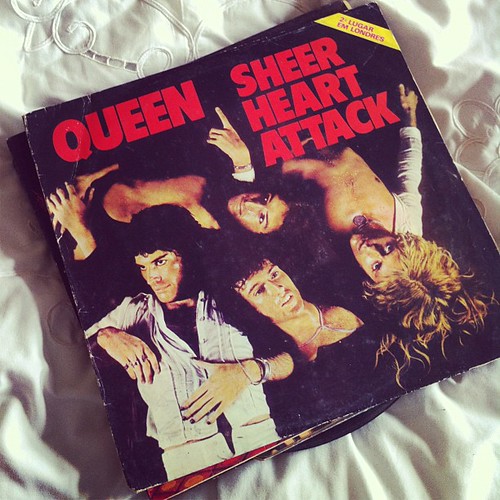
4. **’Sheer Heart Attack’ and International Breakthrough (1974)**: May 1974 brought a significant challenge as Queen embarked on their first US tour, opening for Mott the Hoople. Brian May collapsed during the tour and was subsequently diagnosed with hepatitis, forcing the cancellation of their remaining dates. Despite May’s continued absence, the band commenced work on their third album, demonstrating their commitment to maintaining creative momentum. Fortunately, May was able to rejoin the recording process midway through, contributing his distinctive guitar work to the developing tracks. Released later in 1974, ‘Sheer Heart Attack’ swiftly ascended to number two in the UK charts, achieved strong sales across Europe, and earned gold certification in the US, marking Queen’s inaugural experience of genuine international success and becoming a hit on both sides of the Atlantic.
‘Sheer Heart Attack’ was a testament to Queen’s growing musical adventurousness, experimenting with a rich tapestry of genres that extended beyond their established heavy metal and progressive rock roots. The album incorporated elements of British music hall, intricate ballads, ragtime, and even Caribbean influences, showcasing a remarkable versatility. Brian May’s “Now I’m Here” lyrically documented the group’s prematurely curtailed American tour, while “Brighton Rock” served as a powerful vehicle for his regular, virtuosic on-stage guitar solo spot, a highlight of their live performances. This album also marked a significant milestone for John Deacon, who penned his first song for the group, “Misfire.” The live favourite “Stone Cold Crazy,” a high-energy track, was notably credited to the entire band, highlighting their collaborative songwriting. Freddie Mercury contributed the closing number, “In the Lap of the Gods… Revisited,” which he specifically crafted with the intention that audiences could sing along to its chorus during live performances, foreshadowing the communal anthems that would later become a hallmark of their career.
The album’s lead single, “Killer Queen,” written by Freddie Mercury and exploring the persona of a high-class prostitute, quickly became a sensation. It climbed to number two on the British charts, establishing itself as Queen’s first major UK hit, and concurrently became their first US hit, reaching number 12 on the Billboard Hot 100. The song was partly recorded at Rockfield Studios in Wales, with Mercury playing the grand piano, expertly blending elements of camp, vaudeville, and British music hall with May’s distinctive guitar work. “Now I’m Here” was released as the album’s second single, achieving a respectable number eleven chart position. The album’s critical standing has grown over time; in 2006, Classic Rock ranked ‘Sheer Heart Attack’ number 28 in “The 100 Greatest British Rock Albums Ever,” and in 2007, Mojo placed it at No.88 in “The 100 Records That Changed the World.” It also holds the distinction of being the second of three Queen albums to be featured in the influential book ‘1001 Albums You Must Hear Before You Die’, underscoring its enduring impact and artistic merit.
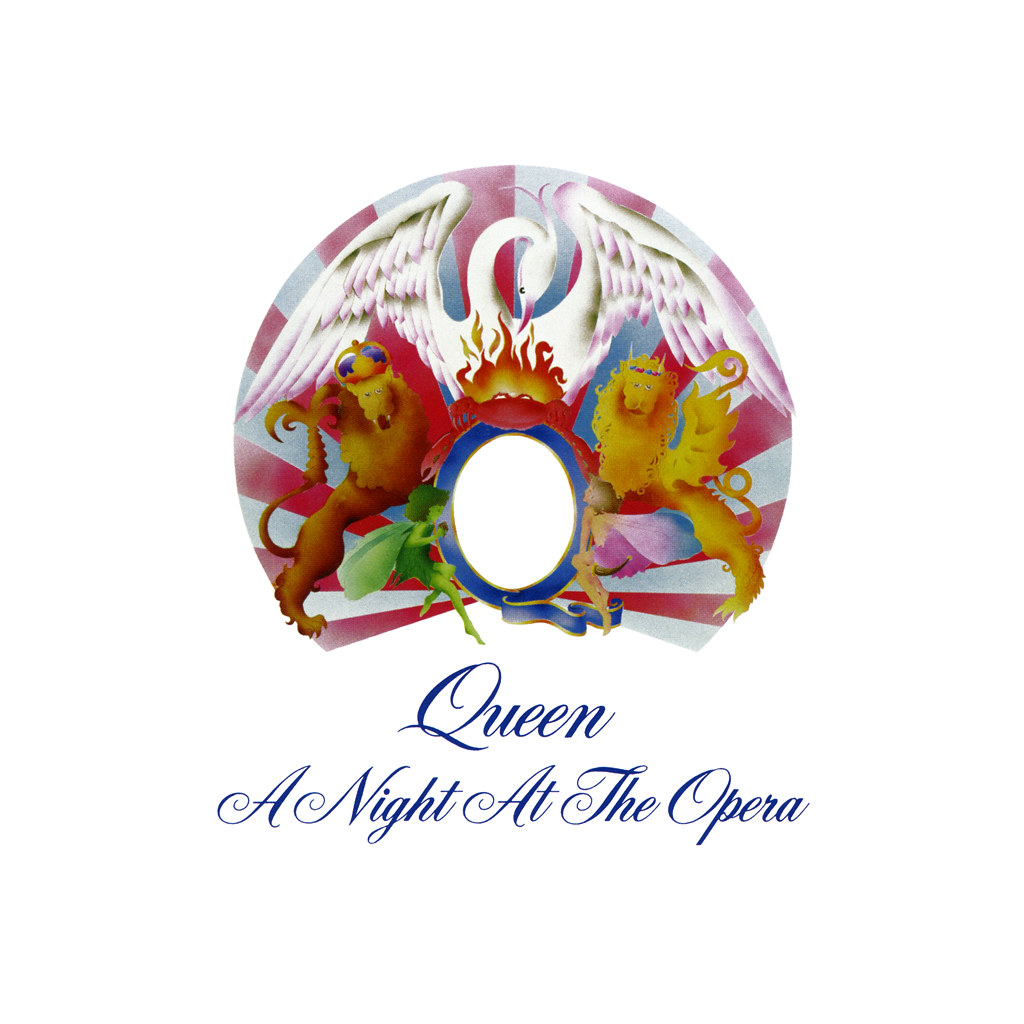
5. **From Trident to Triumph: Securing New Management and the Genesis of ‘A Night at the Opera’ (1975)**: January 1975 saw Queen embark on an ambitious world tour, featuring an upgraded light show that enhanced their burgeoning stage presence. The tour saw them headline in the US for the first time, make their debut in Canada, and from mid-April to early May, they captivated audiences across Japan, where they were greeted by thousands of screaming fans and performed eight times in seven cities. Despite this burgeoning global success and growing popularity, the band remained financially constrained by the terms of their original Trident deal. They were still living in relative poverty in bedsits, a situation highlighted by John Deacon being refused money for a deposit on a house. Recognizing the untenable nature of this arrangement, EMI contacted lawyer Jim Beach, initiating efforts to extract the band from their restrictive contract. Trident, however, was resistant, claiming to have invested £200,000 in Queen and demanding their money back first.
Freed from the constraints of their previous management, Queen enthusiastically began work on their fourth album, ‘A Night at the Opera’, taking its name from the popular Marx Brothers movie. This ambitious project quickly became the most expensive album ever produced at the time, with a reported cost of £40,000 and utilizing three different studios to achieve its intricate sound. Reflecting their continued artistic evolution, the album built upon its predecessor’s foundation by featuring an even wider array of diverse musical styles and pioneering experimentation with stereo sound. Freddie Mercury contributed the opening song “Death on Two Legs,” a savage critique aimed at perceived wrongdoers, which he later dedicated to Trident in concert. He also penned the camp vaudeville numbers “Lazing on a Sunday Afternoon” and “Seaside Rendezvous.” Brian May’s “The Prophet’s Song” emerged as an ambitious eight-minute epic, notable for its middle section which employed a canon structure, layering simple phrases to create a rich, full-choral sound. Additionally, Mercury’s poignant ballad, “Love of My Life,” featured a harp and intricately overdubbed vocal harmonies, showcasing the band’s meticulous attention to detail and their growing mastery of studio techniques.
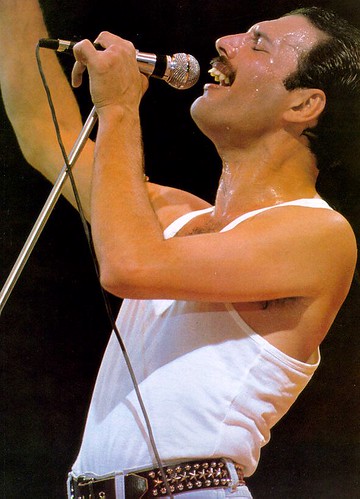
6. **’A Night at the Opera’ and the Global Phenomenon of “Bohemian Rhapsody” (1975)**: Following their liberation from the restrictive Trident contract and under new management, Queen embarked on their fourth album, ‘A Night at the Opera’. Named after the classic Marx Brothers film, this project marked a significant step forward, becoming the most expensive album ever produced at the time, with a reported cost of £40,000 and utilizing three different studios to achieve its intricate sound. The album continued their artistic evolution, expanding upon the diverse musical styles of its predecessor and pioneering experimentation with stereo sound, showcasing an unprecedented level of ambition and meticulous detail in their studio work.
Freddie Mercury penned several key tracks, including the opening song “Death on Two Legs,” a pointed critique aimed at perceived wrongdoers, which he later dedicated to Trident during concerts. He also contributed the distinctive camp vaudeville numbers “Lazing on a Sunday Afternoon” and “Seaside Rendezvous.” Brian May’s compositional prowess was evident in “The Prophet’s Song,” an ambitious eight-minute epic featuring a complex canon structure that layered simple phrases to create a rich, full-choral sound. Additionally, Mercury’s poignant ballad, “Love of My Life,” was enriched with a harp and intricately overdubbed vocal harmonies, underscoring the band’s growing mastery of studio techniques.
central to ‘A Night at the Opera’ was the groundbreaking track “Bohemian Rhapsody,” which originated from musical fragments Mercury had developed during his time at Ealing College. The recording process was notoriously complex, with the band unsure how the various sections would coalesce. The operatic segment alone reportedly involved 180 overdubs, pushing the original tape to its limits. EMI initially hesitated to release it as a single, deeming it too long, and demanded a radio edit, which Queen steadfastly refused.
It was Mercury’s close friend and advisor, Capital London radio DJ Kenny Everett, who played a crucial role in the song’s initial exposure. Despite being given a promotional copy with a strict instruction not to play it, Everett aired it fourteen times over a single weekend, leading to an overwhelming public demand that compelled EMI to release the single. “Bohemian Rhapsody” subsequently topped the UK charts for nine weeks, becoming the third-best-selling single of all time in the UK and the only single ever to sell a million copies on two separate occasions.
The song’s impact was amplified by its pioneering music video, directed by Bruce Gowers, which cost £3,500—five times the typical promotional budget—and was filmed in just three hours. The video, featuring a reprise of the ‘Queen II’ cover with animated band members’ heads, allowed Queen to avoid miming the complex track on TV and is widely credited with practically inventing the music video format seven years before MTV’s launch, solidifying its place as a mandatory tool in music marketing.
‘A Night at the Opera’ achieved immense success, going triple platinum in the United States and earning critical acclaim, frequently appearing on “greatest albums” lists globally. The album’s second single, John Deacon’s “You’re My Best Friend,” also became a worldwide top-ten hit. The album was the third and final Queen album to be featured in the influential book ‘1001 Albums You Must Hear Before You Die’, cementing its legacy. The band’s ‘A Night at the Opera Tour’ commenced in November 1975, including a special concert at the Hammersmith Odeon broadcast live by the BBC, which became a popular bootleg before its official release in 2015.

7. **The Road to ‘The Game’: Live Successes and a New Sound (1978-1980)**: The period spanning 1978 and 1979 saw Queen maintain an intensive touring schedule, captivating audiences across the US, Canada, Europe, and Japan. This relentless live activity culminated in the release of their first live album, ‘Live Killers’, in 1979, which quickly achieved double platinum status in the US, cementing their reputation as a formidable live act and providing a comprehensive snapshot of their electrifying stage presence.
Adding to their string of successes, Queen released the highly popular single “Crazy Little Thing Called Love” in 1979. This rockabilly-inspired song, clearly styled in the vein of Elvis Presley, made the top 10 in numerous countries, notably topping the Australian ARIA Charts for seven consecutive weeks. It also marked their first number one single in the US, where it dominated the Billboard Hot 100 for four weeks, showcasing Mercury’s versatility as a songwriter and performer.
Interestingly, having penned the song on guitar and played rhythm on the record, Freddie Mercury also took on rhythm guitar duties when performing “Crazy Little Thing Called Love” live, marking the very first time he played guitar in concert. Towards the end of 1979, on 26 December, Queen played the opening night at the Concert for the People of Kampuchea in London, a request they accepted from organiser Paul McCartney, rounding off their ‘Crazy Tour of London’ with a significant philanthropic gesture.
Queen ushered in the 1980s with the release of their album ‘The Game’, which featured the immensely successful singles “Crazy Little Thing Called Love” and “Another One Bites the Dust,” both reaching number one in the US. A crucial moment for the latter single occurred after Michael Jackson, having attended a Queen concert in Los Angeles, suggested to Mercury backstage that “Another One Bites the Dust” should be released as a single. This advice proved prophetic, as the song spent three weeks at number one in October 1980.
‘The Game’ itself topped the Billboard 200 for five weeks and sold over four million copies in the US, marking another commercial triumph. This album was also notable for being the first Queen album to incorporate a synthesizer, a significant departure from their previous albums which famously carried a “No Synthesisers!” sleeve note. This note, often misunderstood as an anti-synth stance, was later revealed by producer Roy Thomas Baker to be an attempt to clarify that their multi-layered sounds were guitar-generated, not synth-based, correcting misconceptions by record company executives.
In September 1980, Queen continued their live dominance with three sold-out shows at Madison Square Garden. The same year also saw the release of the soundtrack they had recorded for the film ‘Flash Gordon’, further diversifying their output. Their achievements were recognised at the 1981 American Music Awards in January, where “Another One Bites the Dust” won the award for Favorite Pop/Rock Single, and Queen received a nomination for Favorite Pop/Rock Band, Duo, or Group, solidifying their mainstream appeal and critical acclaim.
From their humble beginnings in West London to becoming global rock titans, Queen’s journey through the mid-70s and early 80s was a remarkable testament to their unwavering ambition, artistic courage, and unparalleled showmanship. They navigated creative tensions, commercial challenges, and profound shifts in their sound, cementing their place as innovators who not only crafted anthems that resonated across generations but also redefined the very parameters of rock music and visual artistry. This era, marked by both soaring triumphs and unexpected controversies, laid the indelible foundation for their continued legend and the unforgettable moments that would follow.



